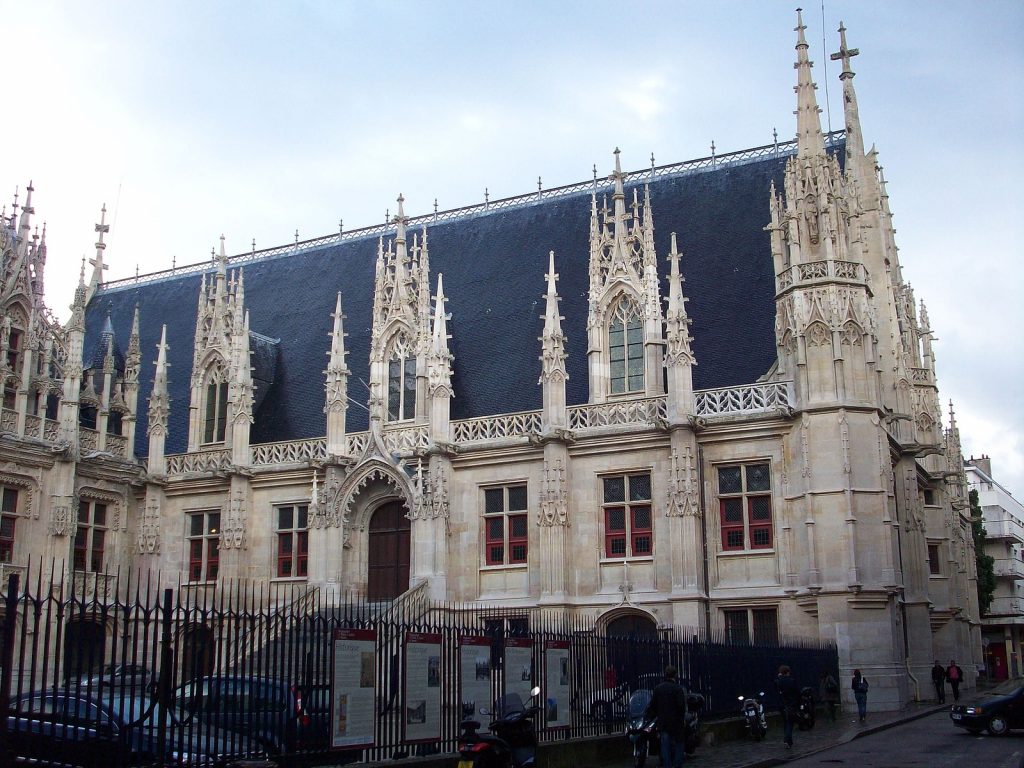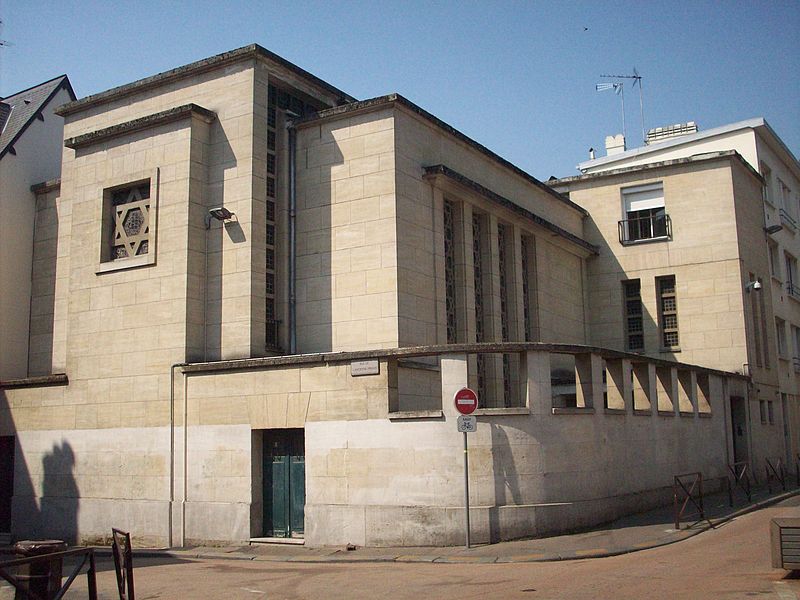In medieval times, there was an intense intellectual life around the synagogue’s Talmudic school in what was called “Le Clos aux Juifs” (the Jews’ Enclosure). Contrary to what its name suggests, the enclosure in question was never a closed space. There were Jews living elsewhere in the town and Christians living in the Clos. All this disappeared in 1306, when the community was expelled. After that, only very few were able to identify Rouen as the brilliant and lively “Rodom” described in ancient texts.

In 1976, repaving work in the courtyard of the Palais de Justice brought to light an extraordinary archaeological find: the walls of an eleventh-century Jewish building, the oldest Jewish monument in Western Europe! Since then, it has been the object of endless debate between specialists. The home of a wealthy merchant, a Talmudic school, a synagogue- what exactly was it? The following fragment from the divine words spoken to Solomon (1 Kings 9:8) were clumsily engraved into the walls three times: “this house, which is high”. No doubt they were hastily inscribed at the moment of the expulsion.
At their base two small columns, a stone dragon and, facing it, a wild beast, placed strangely back to front, with two bodies and only one head (a typical Roman sculpture), are probably an evocation of Psalm 91 (verse 13): “The young lion and the dragon shalt thou trample under feet”. A stone spiral staircase leads to a low room with narrow windows that may have been used to store manuscripts. Following some works, the place can once again be accessed via organized tours of the Maison Sublime.

An ancient synagogue has been present in Rouen from at least the 16th century. But it was then destroyed. Todays’ modern synagogue was built in 1950 by the architect François Herr. It consists of a building and a porch, and most importantly, it is decorated by beautiful stained glass.
Anti-Semitic tags were discovered on the synagogue in Rouen and the rabbi’s residence in January 2025. Just a few months after the attack on the synagogue by a terrorist attempting to set it on fire, a policeman saved the place thanks to his swift intervention.